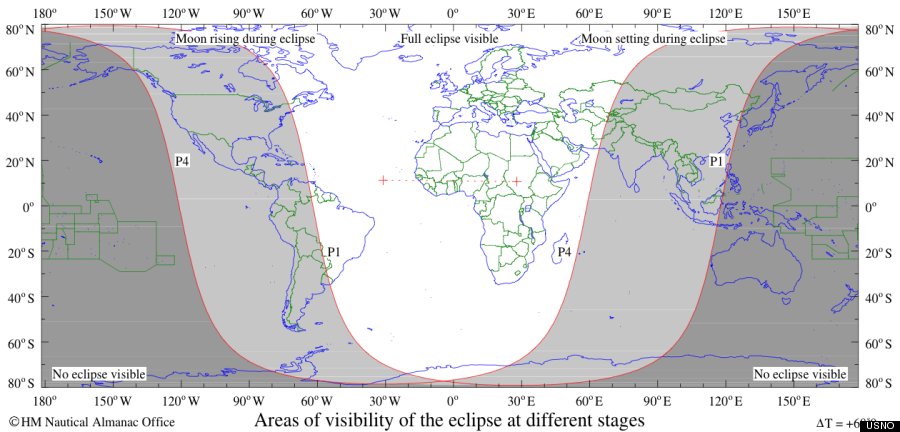October's full moon has a bonus in store for skywatchers this year.
A penumbral lunar eclipse -- so called because only the incomplete outer portion of the Earth's shadow, or penumbra, falls across the moon -- is expected to reach its deepest point at 7:50 p.m. ET on Friday, Oct. 18.
Unlike total eclipses, in which Earth's umbra -- the central region of its shadow -- darkens the moon entirely, a penumbral lunar eclipse involves only a slight dimming. Skywatchers should expect to see a much more subtle sight -- with a shadow on the lower half of the full moon -- like the eclipse pictured below.

The Earth (unseen) casts a faint shadow over the southwestern part of the moon during the penumbral lunar eclipse of a full moon on Monday Feb. 9, 2009 in Manila, Philippines. (AP Photo/Bullit Marquez)
Weather permitting, viewers in the eastern part of the North American continent should have a decent chance of seeing the end of the eclipse. But the best show will be visible in Europe, Africa, and the Middle East. For skywatchers in these parts of the world, the celestial phenomenon will be observable during the overnight hours when the full moon should appear brighter in the night sky. As PlanetSave noted, the penumbral lunar eclipse is expected to take place between 9:51 p.m and 1:50 a.m. GMT.

A map illustrates the expected visibility of the penumbral lunar eclipse during the October 2013 full moon.
(Image courtesy of The Astronomical Almanac/U.S. Naval Observatory)
Viewers along North America's West Coast may be out of luck, as the eclipse will occur during daylight hours there. The next lunar eclipse isn't expected until April 2014.
